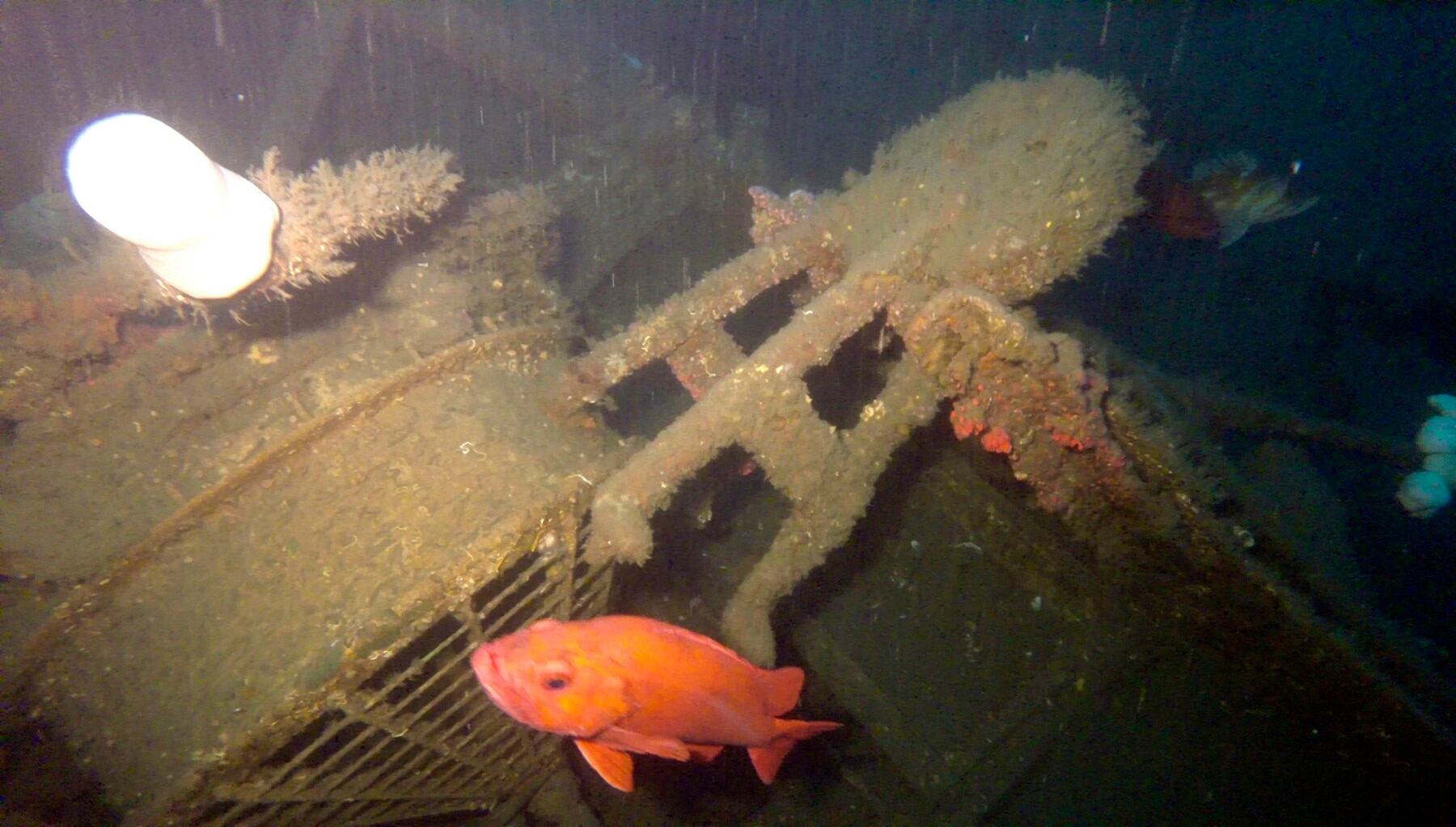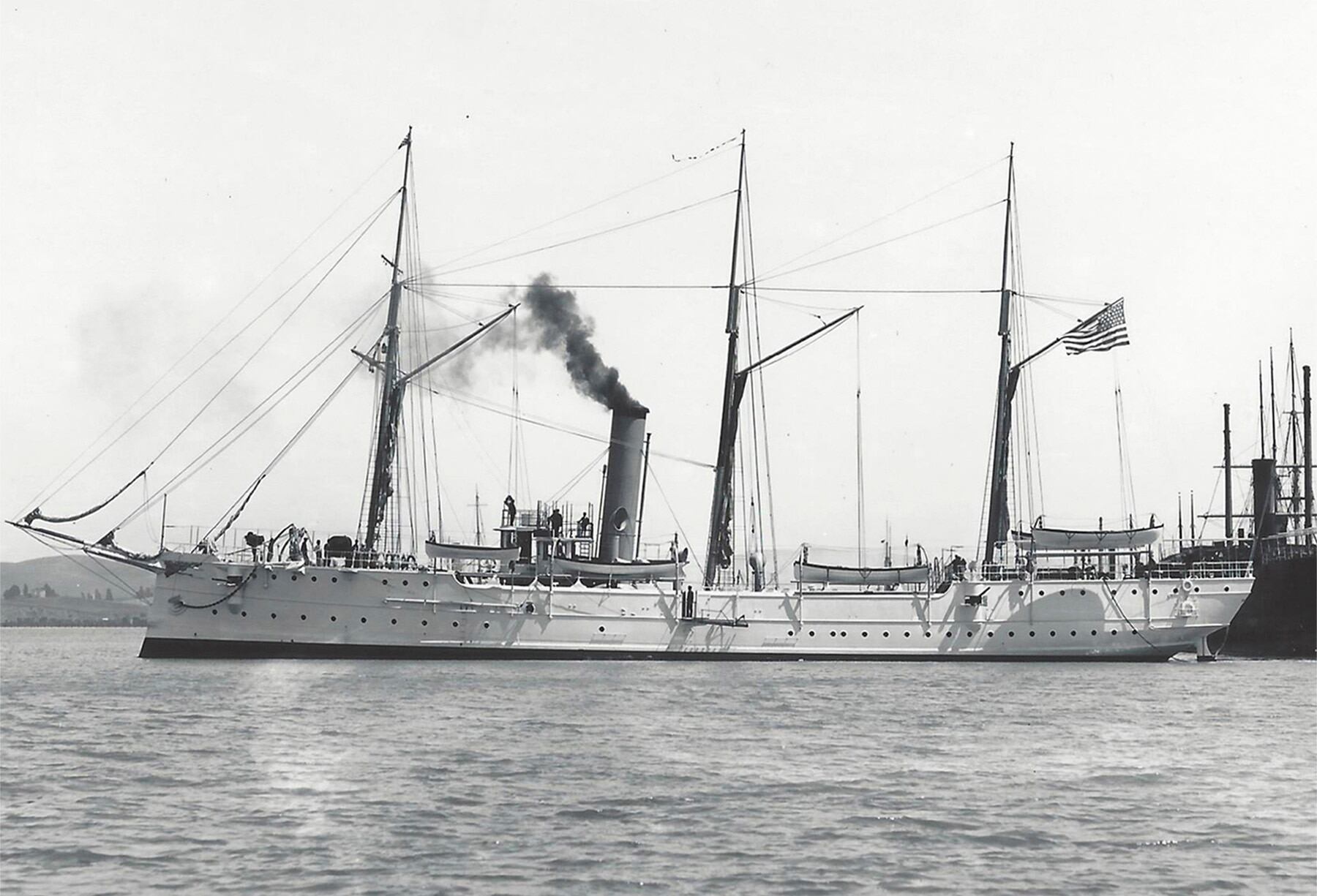
A fish swims past a circular skylight collapsed inside the officer's quarters in the stern of the shipwreck USCG Cutter McCulloch. Researchers discovered the remains of a San Francisco-based U.S. Coast Guard cutter that first set out to sea during the Spanish American War and sank off the coast of Southern California 100 years ago, officials announced.
Photo Credit: NOAA/USCG/Video Ray via AP
The ship sank shortly after hearing a foghorn nearby and then colliding with the SS Governor, a civilian steamship. The McCulloch's crew was safely rescued and taken aboard the steamship.
The National Oceanic and Atmospheric Administration and the Coast Guard discovered the wreck last fall during a routine survey.
Researchers focused on the area of the shipwreck 3 miles (5 kilometers) off Point Conception, California, after noticing a flurry of fish. Sunken ships offer a great place for fish to hide. The site is about 150 miles (240 kilometers) northwest of Los Angeles.
Commissioned in the late 1800s, the McCulloch first set out to sea during the Spanish-American War as part of Commodore George Dewey's Asiatic Squadron in the Battle of Manila Bay.

This undated image provided by NOAA shows the USCG Cutter McCulloch that was launched in 1896.
Photo Credit: NOAA/Mare Island Museum via AP
Cutters based in San Francisco in the late 1800s and early 1900s represented American interests throughout the Pacific. They also played important roles in the development of the Western U.S.
After the war, the cutter patrolled the West Coast and later was dispatched to protect fur seals in the Pribilof Islands off the coast of Alaska, where it also served as a floating courtroom in remote areas.
The archaeological remains, including a 15-inch torpedo tube molded into the bow stem and the top of a bronze 11-foot propeller blade, are draped with white anemones 300 feet (90 meters) below the surface, officials said. A 6-pound gun is still mounted in a platform at the starboard bow.




